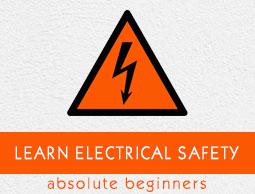Measures Related to Gas/Ducts/Fibre material
It is very important to consider safety measures while working with gas, ducts, fibre material. It is recommended that a person working with these should wear the required safety attire and carry all the necessary tools.
Safety measures related to gas
The incident rate has reached 6% because of electrical cases in oil and gas companies all over the world. Safety precautions play a vital role and help in avoiding electrical hazards.
For reliability and safety reasons, checking periodically and keeping electrical system in good condition is necessary after the installation.
Proper care and experience are needed for the expansion, modification, revamping of existing facilities when working with a live plant.
Need to be professional to choose perfect electrical equipment for installing in a gas industry. For example, HRC fuse is suitable for such industries instead of a kit-kat fuse.
Electrical equipment installation, design, testing and maintenance must follow the standards of respective nationalities to ensure the expected quality as well as the safety.
Safety measures related to duct/ fibres
The duct or conduits are the pathway of cables and protect them.
The electrical conduits must follow the standard specifications of -
- ASTM F2160
- NEMA TC7
- UL 651A & B and UL 2024
- National Electrical Code (Chapter-9)
It is essential to focus on the diameter of conduit ∓ inner duct, number of inner duct, length & direction, the composition of the duct, the coefficient of friction, jam combination, pull speed, temperature, elevation, inner duct weight, mechanical stress, tension and bending radii, etc.
Trained professionals must choose the ducts as per the requirement of the environment including underwater, underground, outdoor location or indoor location. Use symbols for the underground cabling that can restrict the people from digging and facing accidents.
Electrician must use tension meter, cable lubricants and required electrical equipment.
Safety measures related to fibre material
Fibre optic cables need to be handled with care with proper knowledge about bending radius, and cable twisting.
Use laser beam to find damages in the optical communication cable.
Do not stick the broken ends or drop fibre pieces on the floor. Avoid skin contact with the fibre material.
Remember not to drink or eat anything near installation area.
Group classification of flammable gas/ vapor
A flammable gas or vapor can be ignited from an arc or spark at the electrical system and results in dangerous accidents. There are four Class I group classifications in section 500-5(a) as per NEC.
Group A: Acetylene
Group B: Hydrogen and gases equivalent to hazardous in nature
Group C: Ethyl Ether or gases or vapors which are equivalent to hazardous nature
Group D: Gasoline, alcohol, acetone, natural gas & similar material
These groups were made as per the level of hazard related to the explosion pressures of the specific atmosphere. Besides these engineers should follow ‘Practice for the classification of flammable liquids, gases or vapours’ in NFPA 497.
Group classification of Duct
There are different types of electrical ducts or conduits used for various applications.
Galvanized Rigid Conduit
The thickness of galvanized steel tube protects the electrical wiring and become the choice of an electrician in commercial and industrial applications.
Electrical Metallic Tubing
Such conduits are made of steel or aluminum and restricted to a specific radius for bending. It is very popular in commercial, residential and industrial buildings.
Electrical Nonmetallic Tubing
It is moisture resistant and flame retardant and it is easy to bend by hand due to the flexibility.
Flexible Metallic Conduit
It is known as “Greenfield of flex” means it doesn’t maintain permanent bend. It is recommended for dry areas.
Liquid-tight Flexible Metal Conduit
These are covered by a plastic waterproof coating which is applicable for general wiring in wet or damp locations.
Rigid Metallic Conduit
It is made up of coated stainless steel or aluminum which prevents corrosion.
Liquid-tight Flexible Non-metallic Conduit
These are the flame resistant type which is recommended as a raceway for installation of approved conductors (Rating- 600 volts).
Aluminum Conduit
It is used in large amounts of water areas and corrosion prone areas as it prevents corrosion.
PVC Conduit
It resists moisture and corrosion, which has also the higher thermal coefficient of expansion.
Based on the design and shape electrical ducts are classified as follows −
- Individual Round Pipe
- Extended Plenum
- Reducing Trunk
- Multiple Return Air
The following figure shows the different supply duct systems −

The following figure shows a typical duct connection and has –
- Elbow
- Tee
- Reducing Tee
- Cross
- Lateral

Questions
1. Class I group classification of flammable gas/ vapor/liquid is described in ______.
a) NFPA 70
b) NEC Article 500
c) IS
d) None of these
Ans: b
2. Which group does flammable gas Hydrogen belong to?
a) Group D
b) Group C
c) Group B
d) Group A
Ans: c
3. Which one of the followings is known as “Greenfield Flex”?
a) Liquid-tight Flexible Metal Conduit
b) Galvanized Rigid Conduit
c) PVC Conduit
d) Flexible Metallic Conduit
Ans: d




